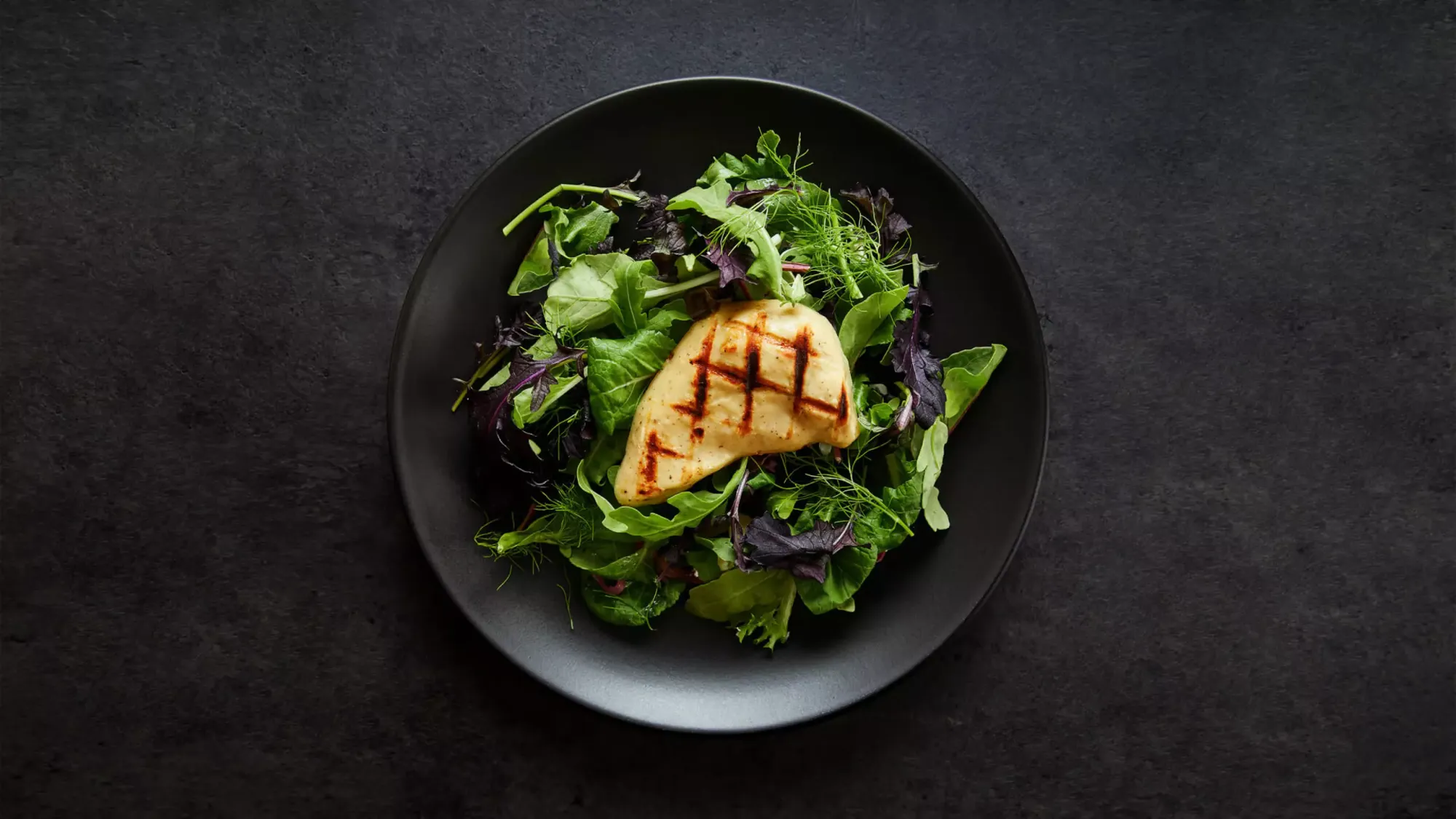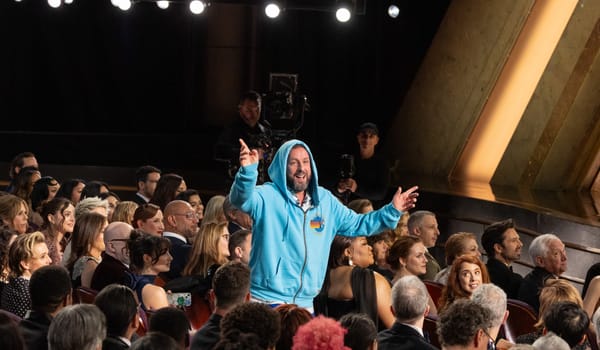13 pickleballers standing guard ‘round your basketball court
Plus: Faux gras

Good evening, readers, and welcome to Nightcap Novelties, a new(-ish) format for Night Water that eschews the single-minded focus of your typical late night missive for a textual variety show, featuring links, memes, creepy TikTok videos, and special guests.
Congratulations to Day Soda reader Andrew Montague, who wrote in to suggest the name “Nightcap Newsfeed” for this format after I tested it last July. While I only used half of your suggested title, I will honor my promise to give you a full month of Day Soda in return for your creativity.
Let’s check in on pickleball (again)
Like many municipalities across America, East Boston is overrun with pickleballers. “A 5 year old child was told he couldn’t play hockey yesterday,” wrote one concerned resident in an email to a city employee. “He was in tears and literally threw himself down on the court, as a little protest. Kids don’t play pickleball.” This email is just one of the thousands of documents 404 Media reporter Jason Koebler read while researching the tensions between pickleballers and their communities.
Longtime Night Water readers will remember my interview with the folks behind Club Leftist Tennis, a group dedicated to stopping the “cancerous growth of fascist pickleball.” Their campaign is tongue-in-cheek, but as Koebler’s reporting shows, the aggressive growth is very real and causing problems nationwide.
Koebler details how USA Pickleball, the national governing body for the sport, has empowered over 2000 of its members with toolkits to promote the sport to city governments. “The emails I obtained from cities around the country show that some ambassadors are highly engaged in pushing for existing basketball or tennis courts to be converted into pickleball courts,” Koebler writes, “and in lobbying for new courts to be built.”
Lobbying for new public space: good! Lobbying to take away public space from other sports and children: bad! Even if we take the supposed fact that pickleball is the country’s fastest growing sport at face value, that doesn’t mean that people have stopped playing basketball, roller hockey, tennis, and handball, to name a few of the spaces pickleballers want to convert.
And I really wouldn’t take any of these numbers at face value. USA Pickleball says the number is around 8.9 million as of last year, a reasonable increase over the 4.1 million estimated in 2021. Meanwhile, the Association of Pickleball Professionals (lol) is telling reporters that the number is 36.5 million. Why the discrepancy? I’d guess it has something to do with the millions of dollars at stake as pickleball companies and teams court investments from athletes like LeBron James and venture capital firms.
I have nothing against pickleball. If VCs want to build private courts and have their little tournaments, that’s great for them. But our public spaces shouldn’t be a casualty in this gold rush. “My 9-year-old son was in tears when he saw the construction at Larsen Park,” one citizen wrote to the San Francisco city government after they adopted a plan to convert a tennis court and basketball court into eight pickleball courts. “Tennis court gone, basketball court gone, with no plans to replace either one… there must be a way to keep the basketball hoops at Larsen and accommodate pickleball too.”
Waiter, there’s a mouse cell in my cultivated foie gras
Technology has changed so rapidly over the last two decades that it’s easy to buy into almost any promise of the future. Full self-driving cars? Of course they’re right around the corner. Smart glasses that will replace phones? Naturally! Real, thinking, sentient AI? It’s practically already here. And while a lot of companies have raised a lot of VC money off those promises, none of them are particularly close to reality.
Add lab-grown meat to that pile. According to Joe Fassler’s reporting in the New York Times last month, despite almost $3 billion of investor money pouring into faux meat companies between 2016 and 2022, lab-grown or “cultivated” meat is no closer to commercial viability today than it was a decade ago. His report is filled with some fascinating details on the challenges these start-ups faced. One company thought it was growing duck but found mouse cells instead. Another can make fake chicken nuggets, but the recipe still relies heavily on plant proteins and fetal bovine serum from the animal supply chain.

Fessler dismisses the entire cultivated meat industry as “a way to pretend that things will go on as they always have, that nothing really needs to change,” and laments how much money went to waste on a pipe dream. Honestly, I can think of worse ways to waste money—Apple spent more than $10 billion in roughly the same time period on their recently canceled self-driving car project—but I understand the impulse. Imagine $3 billion spent on new alternative energy projects or outfitting homes with energy efficient heat pumps instead.
As is likely evident by my reviews of vegan fast food and plant-based chicken wings, I find traditional plant-based meat products fascinating, even if they don’t make up a significant portion of my diet. In the battle to dismantle climate-destroying meat industries, faux meat is a useful tool to help people shift their diets to more sustainable alternatives. Would cultivated meats be an even better tool? Probably, but it’s hard to believe that even a perfect facsimile would be devoid of cultural backlash.
And what these companies have managed to achieve is far from perfect. When Fessler finally got to try some lab-grown chicken from Eat Just—which one chef joked “cost $10,000”—it wasn’t that different than “eating tofu or seitan… which makes sense since it’s filled with plant protein. It would never satisfy a hard-core meat eater, which, after all, was the point. So what was all this effort for?”
Good question, grape_boycott

See also:

A flavorful late night vibe
Via Marsh is a writer, multidisciplinary artist, and filmmaker. Each week, she sends out Film Flavor, a newsletter about the intersection of food and film. Past issues have explored milk’s connection to evil, the surprising parallels between Wonka and Chocolat, and, my personal favorite, why we eat popcorn at movie theaters.
This week, Via’s sharing her late night vibe around the water cooler:
“Lately, my Late Night Vibe™ consists of…
- Watching a movie with my husband almost nightly. (Unfortunately, he almost exclusively prefers 90s/Y2K era inspirational films about misunderstood geniuses, a proclivity that isn’t helping make a dent in my Letterboxd watchlist.)
- Popping a cocktail of prescription pills and vitamins, the most important of which is good old sleepy-girl-mocktail-famed magnesium.
- Eagerly conducting a laborious oral hygiene regimen that combines the science-backed methods of the internet’s beloved Dr. Andrew Huberman with an idiosyncratic brushing method taught to me on YouTube by a lady sitting cross-legged in a river, Nadine Artemis.
- Reading something on my phone under the covers. I use the iPhone’s disability settings to make the screen red in an attempt to lessen the damage, but at the end of the day, a Night Water a day keeps the sleep paralysis demons away, so I do what I gotta do.”
Via, may all of your nights start with A Beautiful Mind and end with burning your retinas.
Make sure you sign up for Film Flavor to start getting flavorful newsletters every Monday morning.
Tonight’s extra special musical guest
Recently, I’ve started getting a lot of “creepy” TikToks in my For You feed. These run the gamut from AI-generated urban legends to tours of abandoned towns to this guy stealing content from Life of Luxury’s YouTube channel.
What they all have in common is the background sound. It’s an odd sort of choir, almost like a slowed down recording of cats meowing. At first, I thought it might’ve been tailor-made for TikTok, but on one of the videos, down in the corner where it shows information about the sound, I saw some familiar album art.
Turns out, it was a short clip from “13 Angels Standing Guard ‘Round the Side of Your Bed” by Montreal post-rock group A Silver Mt. Zion, a side project from Godspeed You! Black Emperor’s Efrim Menuck. You’re forgiven if you're not familiar with either of these bands—as is likely obvious, they’re not aiming for mainstream success—but I fell in love with them when I was a teenager first discovering music out on the World Wide Web.
So how did this song end up soundtracking an entire subgenre of TikTok video? It started back in 2020 when some TikTokers alleged that the sound was what real angels actually sounded like and things spiraled from there.
Songs get recontextualized on TikTok all of the time, whether it’s for a trend like spinning your pet around to Taylor Swift’s “August” or shuffling to Pinegrove’s “Need 2,” but this was one of the stranger ones I’ve experienced. 14-year-old me trawling the internet for any MP3 related to the Montreal indie rock scene could not have guessed that someday a track from A Silver Mt. Zion would end up soundtracking thousands of bottom-barrel engagement bait short-form videos. But such is the cycle of life.





